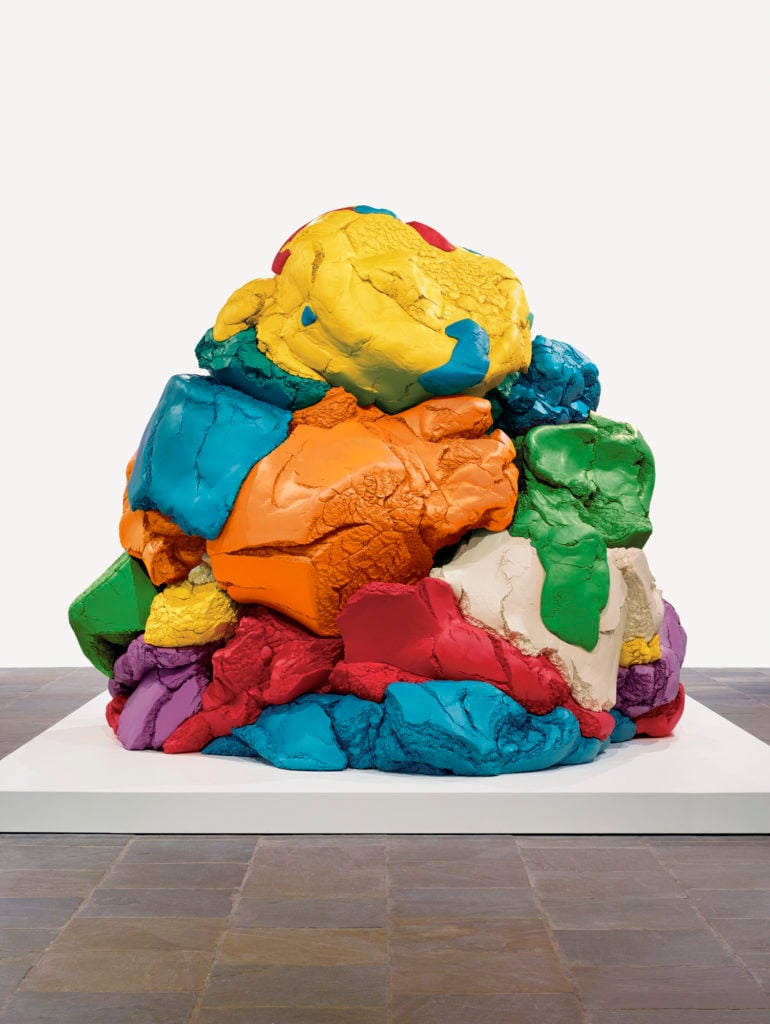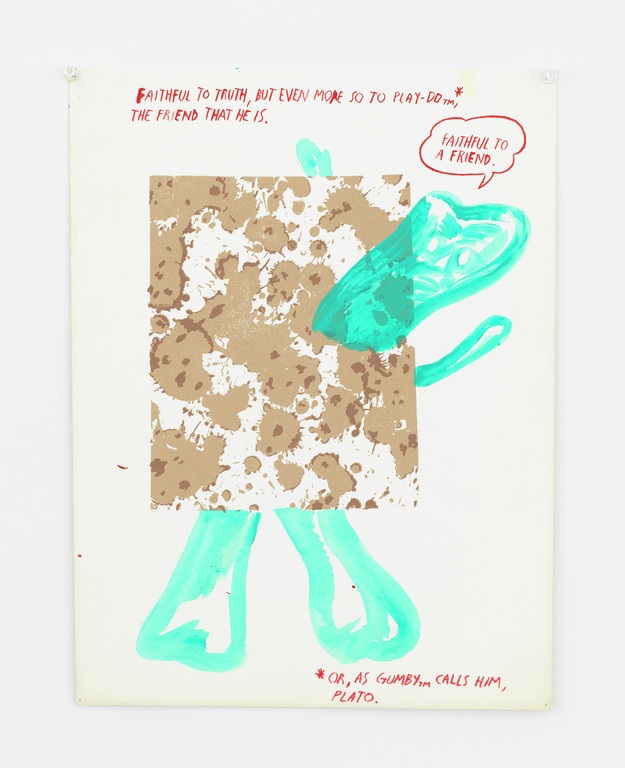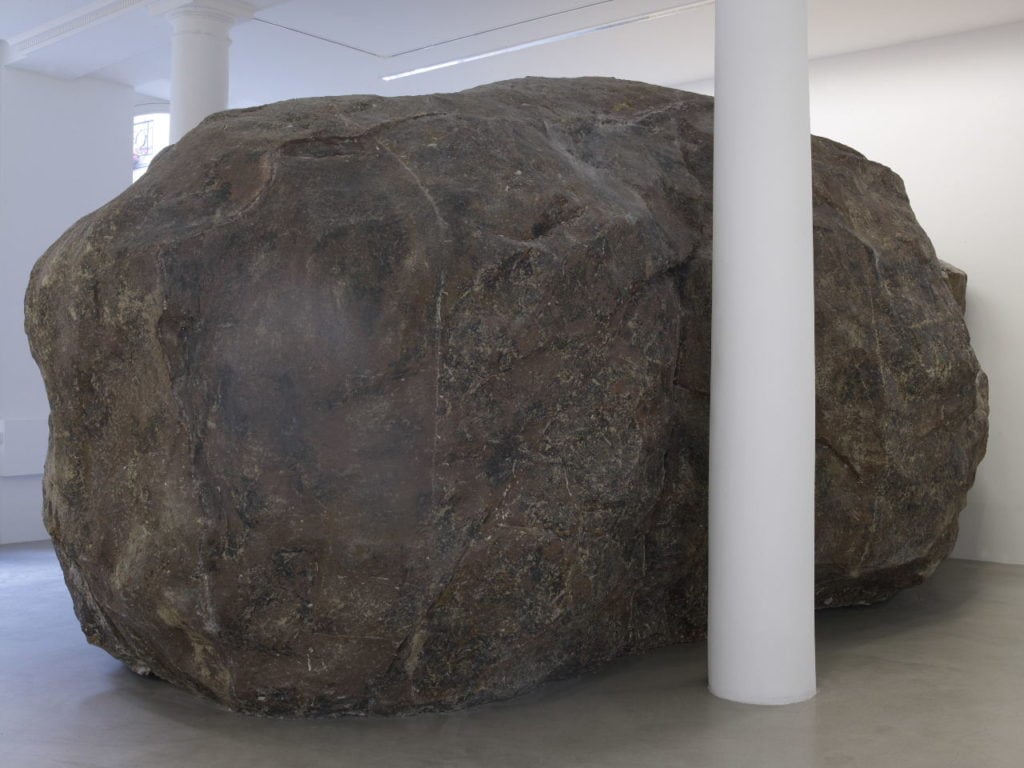Art World
The Getty Villa Is Doing an Art Show Inspired by Plato—and Yes, It Includes Jeff Koons’s ‘Play-Doh’
The contemporary art show features works that engage with Plato's philosophy.

The contemporary art show features works that engage with Plato's philosophy.

Sarah Cascone

As Los Angeles’s Getty Villa prepares to unveil a complete reinstallation of its collection of ancient art in April, the museum is looking to the present with its first exhibition dedicated solely to contemporary art. Titled “Plato in LA: Contemporary Artists’ Vision,” the show features works that engage with the philosophy of Plato.
Artists include Michelangelo Pistoletto, Mike Kelley, Paul McCarthy, and Paul Chan. The star of the show, naturally, is Jeff Koons’s Play-Doh (1994–2014), a monumental polychromed aluminum sculpture of the children’s modeling compound, colorful mounds piled high.

Raymond Pettibon, No Title (Faithful to truth…), 1998. Courtesy of David Zwirner, New York. © Raymond Pettibon.
“In many ways, this is the perfect Koons,” said Jeffrey Spier, the Getty’s senior curator of antiquities at a luncheon announcing the Villa’s spring 2018 programming. He noted that the work could be considered the Platonic ideal form of Play-doh.
The exhibition, the brainchild of guest curator Donatien Grau, reflects the Getty Villa’s mission not only to showcase classical art but to “draw connections between contemporary art and the ancient world,” said J. Paul Getty Museum director Timothy Potts.

Huang Yong Ping, Caverne (2009). Courtesy of the artist and kamel mennour, Paris. Photo by Marc Domage. © 2017 Artists Rights Society (ARS), New York/ADAGP, Paris.
“There has to be a compelling reason that a contemporary art exhibition is at the Getty Villa,” he added, insisting that every artist featured has made an effort to connect to and intellectually engage with Plato’s philosophy. (Apparently, a witty play on the Plato/Play-Doh homophone is enough.)
Other works in the show include a series of Raymond Pettibon drawings that Spier called “a mini-retrospective of his Platonic musings” over the last 30 years, and Huang Yong Ping’s Caverne, an installation inspired by Plato’s famed Allegory of the Cave that references the Taliban’s destruction of images and culture. Other pieces have been commissioned specially for the exhibition from artists including Adrian Piper and Joseph Kosuth.

Huang Yong Ping, Caverne (2009). Courtesy of the artist and kamel mennour, Paris. Photo by Marc Domage. © 2017 Artists Rights Society (ARS), New York/ADAGP, Paris.
“Plato touched just about every area of Western philosophy,” said Potts. “This sets up all sorts of issues for artists.”
Founded in 1974, the Getty Villa was designed based on the Villa dei Papiri, buried in the year 79 by the eruption of Mount Vesuvius. Ahead of the upcoming reinstallation, the museum spent three years analyzing the collection to best determine how to present it.
The upgraded galleries, which follow a historical sequence and add 3,000 square feet of exhibition space, will be unveiled in full on April 18, 2018.
“Plato in LA: Contemporary Artists’ Vision” will be on view at the Getty Villa, 17985 Pacific Coast Highway, Pacific Palisades, California, April 18–September 3, 2018.